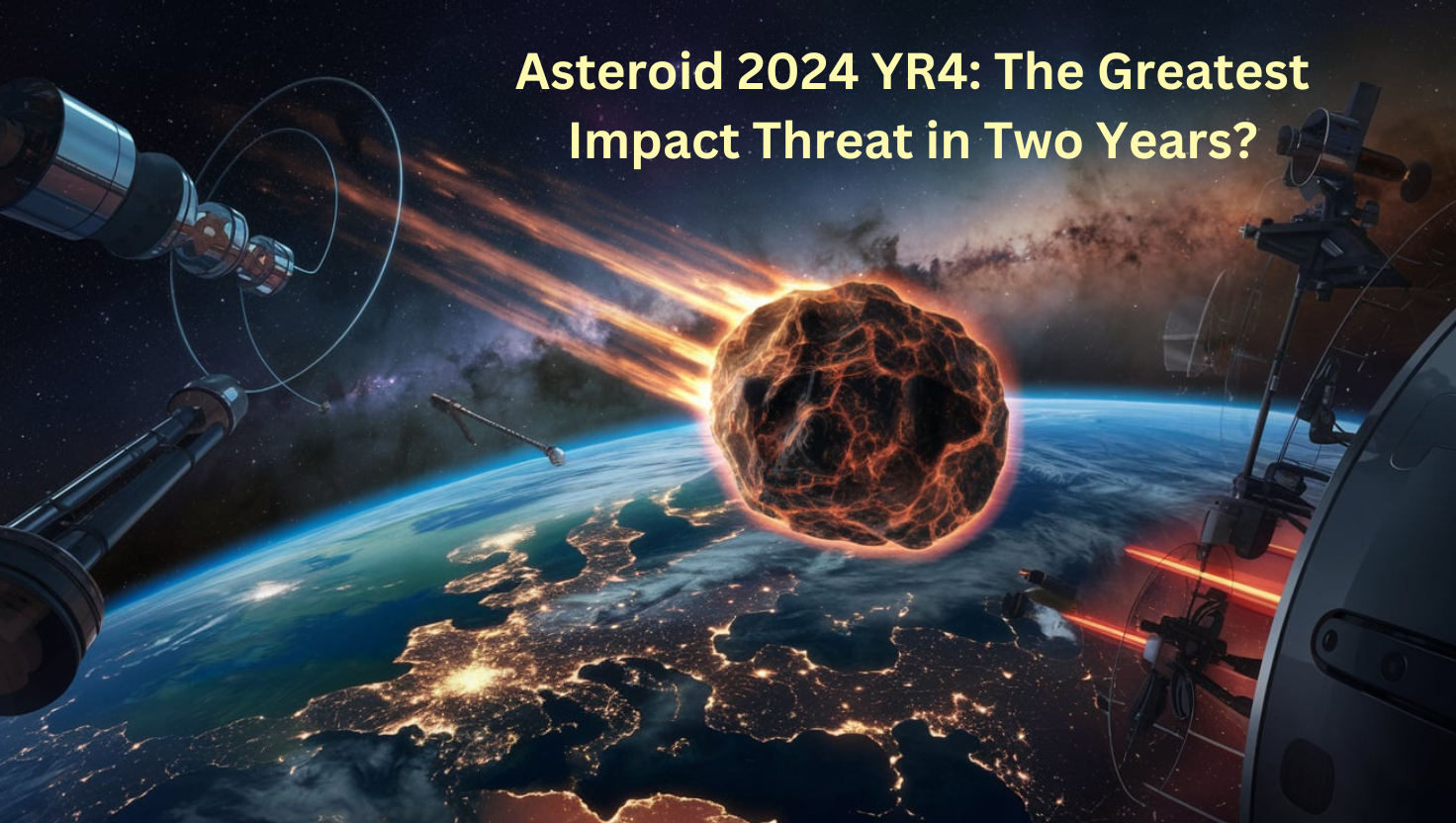Asteroid 2024 YR4: The Greatest Impact Threat in Two Years?
December 27, 2024, astronomers working at the Asteroid Terrestrial-impact Last Alert System (ATLAS) in Chile picked up a near-Earth object that has sparked serious concern among scientists. Called 2024 YR4, the asteroid was graded as posing the highest impact risk in over two decades with a 2.3% possibility (1 in 43 likelihood) to collide with Earth on December 22, 2032. NASA and other world space organizations, including ESA (European Space Agency), closely monitor its trajectory as continued observation continues to establish its path.
What Do We Know About 2024 YR4?
Size: 130 to 300 feet (40 to 90 meters) in diameter.
Speed: Estimated to be traveling at 38,000 mph (61,000 km/h) if it hits Earth.
Impact Probability: Initially 1.2%, recalculated to 2.3% based on new information.
Current Threat Level: Rated 3 on the Torino Scale, meaning it is worth noting but not an imminent threat.
Since it was discovered, 2024 YR4 has appeared on NASA's Sentry Impact Risk Table, a system implemented for tracking near-passing potential danger asteroids. The more and more observations taken, the likelihood of impact lowers according to the predictions of scientists – such as when it did with Apophis, an additional asteroid earlier reported to pose risk before ruled out.
What Happens if 2024 YR4 Makes Impact on Earth?
While too diminutive to register the effect at an international level, 2024 YR4 would be destructive on a domestic level. Just to appreciate that, recall how the 66-foot (20-meter) wide Chelyabinsk meteor which exploded above Russia in 2013 caused damage to more than 1,500 people by its shockwave.
2024 YR4 direct hit will cause:
- Atmospheric air burst with discharged energy amounting to up to hundreds of Hiroshima bombs.
- Upsetting of cities if it touches the ground, causing huge casualties and economic losses.
- Tsunamis, in the event that it breaks into an oceanic region such as the Pacific or Atlantic Oceans.
- Shockwave damage on a large scale, especially in highly populated areas such as South Asia or Africa.
NASA and ESA's Monitoring Efforts
The asteroid will be visible until April 2025, when it will vanish from sight until June 2028. It is to be targeted with NASA's James Webb Space Telescope (JWST) in March 2025 for precise calculations. Scientists are hoping that subsequent observations will nail its trajectory and perhaps eliminate the risk of impact.
Aside from observation, space agencies have developed planetary defense strategies, including:
- DART Mission (2022): NASA successfully redirected an asteroid's trajectory using a kinetic impactor.
- NEO Surveyor (2028): A NASA mission planned to detect 90% of near-Earth objects 140 meters (460 feet) or larger.
- Gravity Tractors & Nuclear Options: Other solutions being discussed to deflect dangerous asteroids in case of necessity.
Historical Context and Lessons Learned
Asteroid threats are not new. The 2004 Apophis asteroid was initially computed to pose an impact threat to Earth in 2029, only to be harmless. On the other hand, the Chicxulub asteroid that struck the Earth 65 million years ago was about 6 miles (10 km) in diameter and wiped out the dinosaurs.
While 2024 YR4 is hardly that big, it is a reminder why ongoing monitoring and planetary defense programs are needed to ensure Earth's long-term safety.
Conclusion: Cause for Concern or Just Another Space Rock?
Panic is not the requirement as yet, but the moment is a time that must be continually observed and monitored. With high-end telescopes, space missions, and evasion tactics from impact, NASA and space agencies from across the globe are ready to take on likely risks. The next couple of years would determine whether 2024 YR4 would prove to be a real threat or be just one of those asteroids passing over our world harmlessly.
As the space agencies become more accurate in their calculations, this much is certain—our ability to predict and prevent asteroid impacts has never been stronger. Until that day arrives, December 22, 2032, is a date to watch in the celestial calendar.

